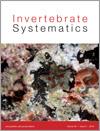A new genus and species of the suborder Maricola, representing the first marine triclad living in freshwater within a cave, is described. These flatworms show specialised features, such as a lack of pigmentation and eyes, indicating their troglobitic condition. Until now, cave-dwelling triclads have only been found as representatives of the other two triclad lineages. The phylogenetic trees based on 18S rRNA and 28S rRNA genes showed their sequences to form a clade situated in a rather derived position within the Maricola. Combining maximum likelihood and Bayesian analyses along with morphological studies, we undertake the first integrative description of a marine triclad. The new genus is characterised by a secondary copulatory bursa and ovaries located behind the root of the pharynx. Nevertheless, its assignment to a family of Maricola was a difficult task especially due to the paucity of unique defining morphological features of their families. The new species is found in a semiarid environment that suffered marine transgressions and regressions during the Cretaceous, which may explain the presence of this originally marine species in a freshwater cave. The restricted distribution of the new species and recent environmental conditions detected at its type locality raise major concern for its conservation.
BioOne.org will be down briefly for maintenance on 12 February 2025 between 18:00-21:00 Pacific Time US. We apologize for any inconvenience.
How to translate text using browser tools
8 May 2018
An integrative taxonomic approach reveals the first marine triclad (Platyhelminthes) trapped in a cave from a semiarid Neotropical environment
Stella Souza,
Marta Riutort,
Rodrigo Lopes Ferreira,
Ana Leal-Zanchet
ACCESS THE FULL ARTICLE

Invertebrate Systematics
Vol. 32 • No. 3
June 2018
Vol. 32 • No. 3
June 2018
molecular taxonomy
stygofauna
Tricladida




